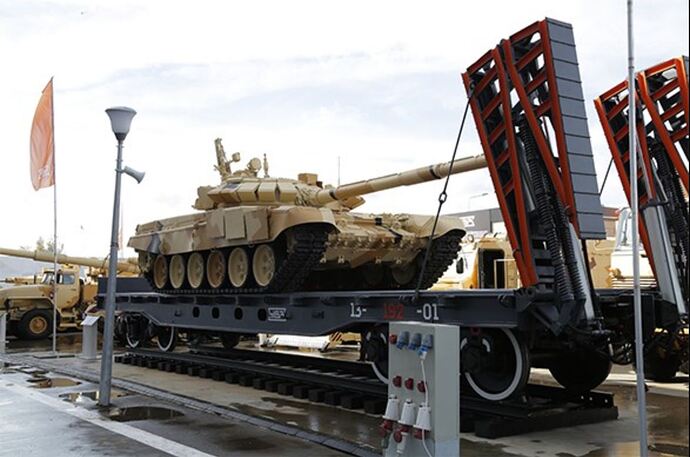What kind of railcars would the Russian army be using for armor transportation. I have a few 1/35 SSYMS tiger tank flat cars and wondered if the Russians were using the equivalent of these. If so i may entertain a diorama in the future. I also did further research and found that the T-90 is 46 tons, so would they be able to fit on the 50 ton railcars the Germans used for panthers. I ask because some of these old railcars were used to transport us equipment during the Cold War and I’ve always wondered if both sides still have these railcars in their rolling stock?
@Frenchy great pictures thank you!
There are some pictures on this engines of the red army page:
@phil2015 thank you
Hello Greg,
Just read your posting and thought I could add a little info. Russian and European, i.e. German, rail cars use a different gauge of track. They may look similar but are of different track width and such. This is the reason the Germans had trouble initially running heavy rail cars into Russia, and the Russians heavy cars into Europe. They both used each others cars they captured. The two rail systems are incompatible with each other. It may be different in modern times but before WWII and after they were different.
Hope this helps in a way.
Best Wishes,
Walter
Lost in Ohio
I
@BuddytheElf yes i vaguely remember the rail gauges being different but there were ways to convert the railway cars to run on each gauge. I always wondered if the Russians took stock of the German rolling stock after the war as war trophies and converted them to their gauge. I think they took BR 52 locomotives and used them in Russia but maybe I’m wrong.
@Frenchy thats another great picture, i wonder how different Russian flag cars are from the 40s to present day?The ramp variant is interesting as well. Almost reminds me of something that would be on there 1960s border trains.
Back in the cold war days we used WWII era German rolling stock to move our armour (Chieftains in my case).
Russia still uses a wider gauge for its railways.
You can compare the modern ones to a WW2 one like the LZ Models one
I guess the most visible difference would be the bogies/trucks look…
H.P.
They also have a different loading gauge which means the cars are generally wider. (This can mean that the bolster locations are different to take advantage of the larger clearance. Not sure if they do, but they can.) They use knuckle couplers similar to American railroads rather than hooks and buffers like in western Europe.
To make an accurate representation you are looking at a scratchbuild from the rails up, and from the wheels down while you are at it.
KL
@Frenchy i vaguely remember that kit, i wonder if i can still get it for sale?
@KurtLaughlin sounds like a pipe dream at this point for me then. Wasn’t sure if it’d be feasible without an actual kit. I wonder if i can find a 3D mod version to have someone print for me? Thank you for the information, i didn’t realize the railways cars would be so different across the board.
@Shadomobile i had heard of nato forces using old ww2 rolling stock to transport armor. Was never totally sure if it was true or not. Appears to be with what you and my father have reiterated it recent days. He was on M60s in Germany.
Would O gauge Knuckle couplers work in a 1/35 railcar? I was looking to see if anyone made knuckle couplers but haven’t had luck yet.
I have seen a photo of an IS-.3 on a German flatcar after the war, so yes, they used German equipment. It may have been used in Eastern Germany (or even Europe) without modifications.
@varanusk i need to do some research in the knuckle coupler and see when it was 100% adopted. I know there’s stations where the Russians have the ability to change gauges and widen the wheels or narrow them.



